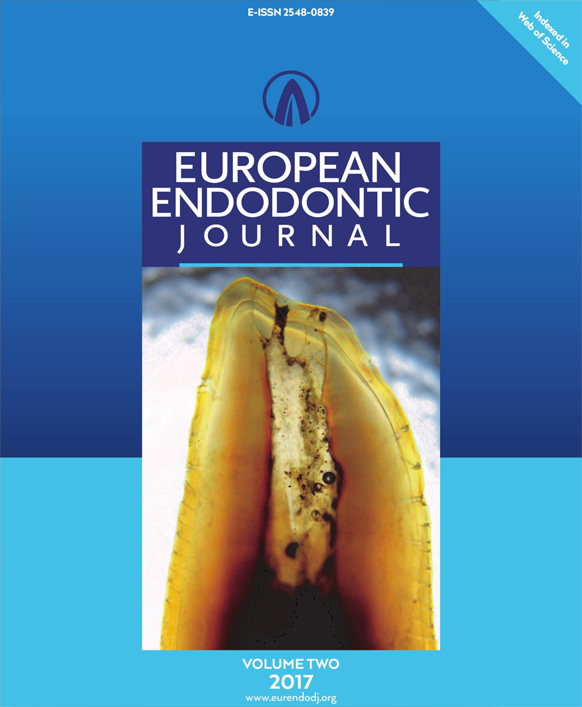
European Endodontic Journal
Yazarlar: Alison Agnes, Audi Long, Samantha Best, Doug Lobne
Konular:-
DOI:10.5152/eej.2017.17001
Anahtar Kelimeler: Composite resins,Dental pulp capping,Toxicity,Vital pulp therapy
Özet: Direct pulp capping involves covering exposed pulp to preserve its viability. Calcium hydroxide materials have traditionally been the most commonly used pulp capping compounds; however, they can be toxic, and their success rate in pulp capping is variable. Recently, the compound mineral trioxide aggregate (MTA) has gained wide use for pulp capping. One advantage of MTA is its low toxicity. However, the effects of MTA and calcium hydroxide compounds on the toxicities of other dental materials have not been tested. The aim of this study is to determine whether different pulp capping materials can alter the toxicity of composite restoration materials. Methods: We used cultured human dental pulp cells to test the toxicities of the calcium hydroxide pulp capping material Dycal and MTA. We then tested the abilities of these compounds to alter the toxicity of the composite materials Durafill and Flow Line and to induce oxidative stress. Results: As expected, Dycal demonstrated toxicity, while MTA did not. However, when cells were exposed to subtoxic amounts of Dycal or MTA, then exposed to Durafill or Flow Line, changes in the composite materials induced toxicity. Treatment with Dycal had no effect on the toxicity of Durafill, but significantly attenuated the toxicity of Flow Line; meanwhile, MTA significantly enhanced the toxicity of Durafill but had no effect on the toxicity of Flow Line. Early changes in oxidative stress were correlated with later changes in cell death. Statistical calculations were performed using one-way ANOVA followed by the Bonferroni t-test. P-values <0.05 were considered to indicate significant differences. Conclusion: The results suggest that when choosing a pulp capping material, one factor that should be considered is the impact of that compound on the toxicity of the composite material used for restoration.